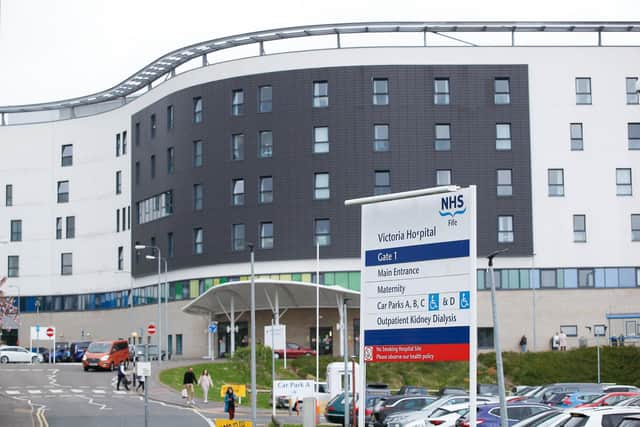NHS waiting times in Fife: A&E and ambulance waiting times at our hospitals
and live on Freeview channel 276
Ambulance response times, and cancer care targets, have also been analysed for the Kingdom’s health services.
With record long waits for urgent care, the country’s health and care system faces considerable pressures this winter.
Advertisement
Hide AdAdvertisement
Hide AdIn a bid to support the NHS throughout the colder months the Scottish government pledged more than £600m in October - but how much of an impact will it have on an already struggling health system?


Our publisher, NationalWorld, is tracking how well NHS Scotland is performing using the latest figures published by Public Health Scotland and the Scottish Ambulance Service. The aim is to allow you to see how your local hospitals are doing.
Pressures on A&E at Victoria Hospital in Kirkcaldy have been intense for some time, with several appeals from NHS Fife to people to use the service properly.
The Vic, in common with all Scottish hospitals, has a guideline which says 95% of people attending A&E should be seen, admitted, discharged or transferred within four hours.
Advertisement
Hide AdAdvertisement
Hide AdBut the NHS overall has failed to hit this target since July 2020 and figures show how the situation has worsened since the Covid-19 pandemic.
For the week ending December 18 The Vic recorded a 48% success rate, rising to 60% the following week as Christmas Day fell.
The data shows a clear shift in the monthly figures.
April 2019 - the last full year before the pandemic - saw 94.7% seen within the four-hour limit. By 2021, that figure had slipped to 91.9%, and in 2022 it was 77.5%
That drop is mirrored across the year just ended.
Where 90% and more of the target was met each month in 2019, last year saw those figures vary from 78.2% in March to 70.1% in November.
Advertisement
Hide AdAdvertisement
Hide AdOne of the major problems is bed blocking where patients fit enough to be discharged cannot return home because care packages are not in place - leading to new patients enduring sometimes long waits.
The issue is impacting across Scottish health boards. On one day each month, a count is taken of patients delayed from leaving hospital. On October 27, the national figure stood at 1,910 - the highest since the census began in July 2016.
Fife’s average ambulance response time was 7.08 minutes - slower than the six minutes set by national guidelines to reach people with life-threatening conditions. These are classified as ‘purple incidents’.
By comparison, Tayside recorded times of 9.58 minutes, and Forth Valley 6.29
Advertisement
Hide AdAdvertisement
Hide AdThe Kingdom is on target when it comes to minimising cancelled operations - just 5.2% at the Queen Margaret Hospital in Dunfermline, and 7.8% at the Vic.
When it comes to cancer care, Fife, as part of the south east Scotland cancer network, is seeing 81.4% of patients within the stipulated 62 days - but the Scottish Government guidelines want 95% seen in that timescale.